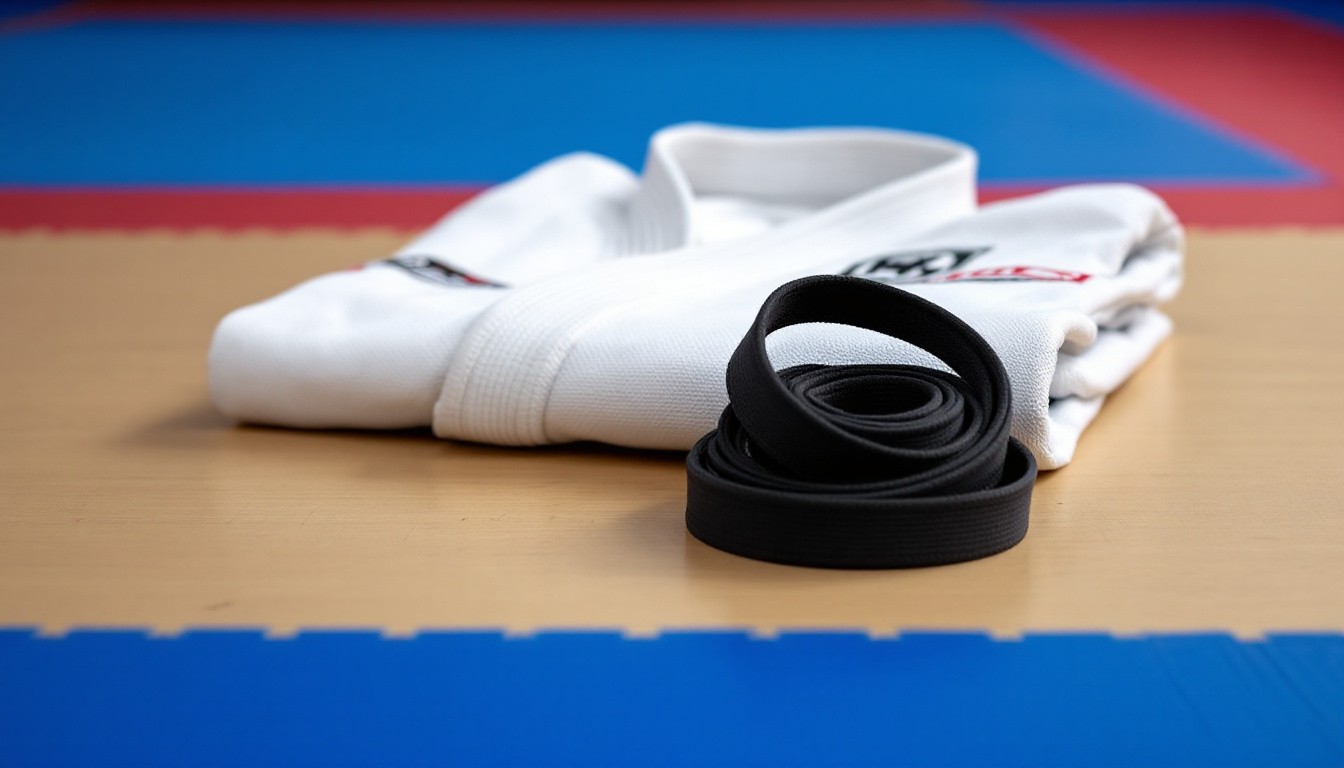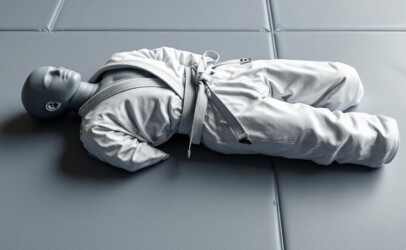At Jiu jitsu, we’re excited to share our passion for this dynamic martial art. Jiu-jitsu offers a unique blend of physical and mental benefits that can transform your life.
From improved fitness to effective self-defense skills, jiu-jitsu has something for everyone. In this guide, we’ll explore the essentials of jiu-jitsu training, including techniques for beginners and tips for choosing the right school, drawing insights from the Jiu Jitsu World League and beyond.
Why Jiu-Jitsu Transforms Lives
Jiu-jitsu transcends the realm of martial arts; it’s a life-altering practice that yields numerous benefits. A study found that wrestlers experienced a decrease in fat mass from 14.3 ± 3.1% to 13.3 ± 3.4% after weight loss practices.
Physical Metamorphosis
Jiu-jitsu workouts pack a punch, burning up to 1000 calories per hour. This high-energy expenditure results in rapid fat loss and muscle gain. Many practitioners shed 10-15 pounds within their first three months of consistent training (a testament to the art’s effectiveness).
Mental Fortitude
The mental advantages of jiu-jitsu prove equally impressive. A survey by the Brazilian Jiu-Jitsu Mental Health Association unveiled that 87% of practitioners reported reduced stress levels and improved focus in their daily lives. The problem-solving nature of jiu-jitsu stimulates cognitive function, enhancing decision-making skills both on and off the mat.
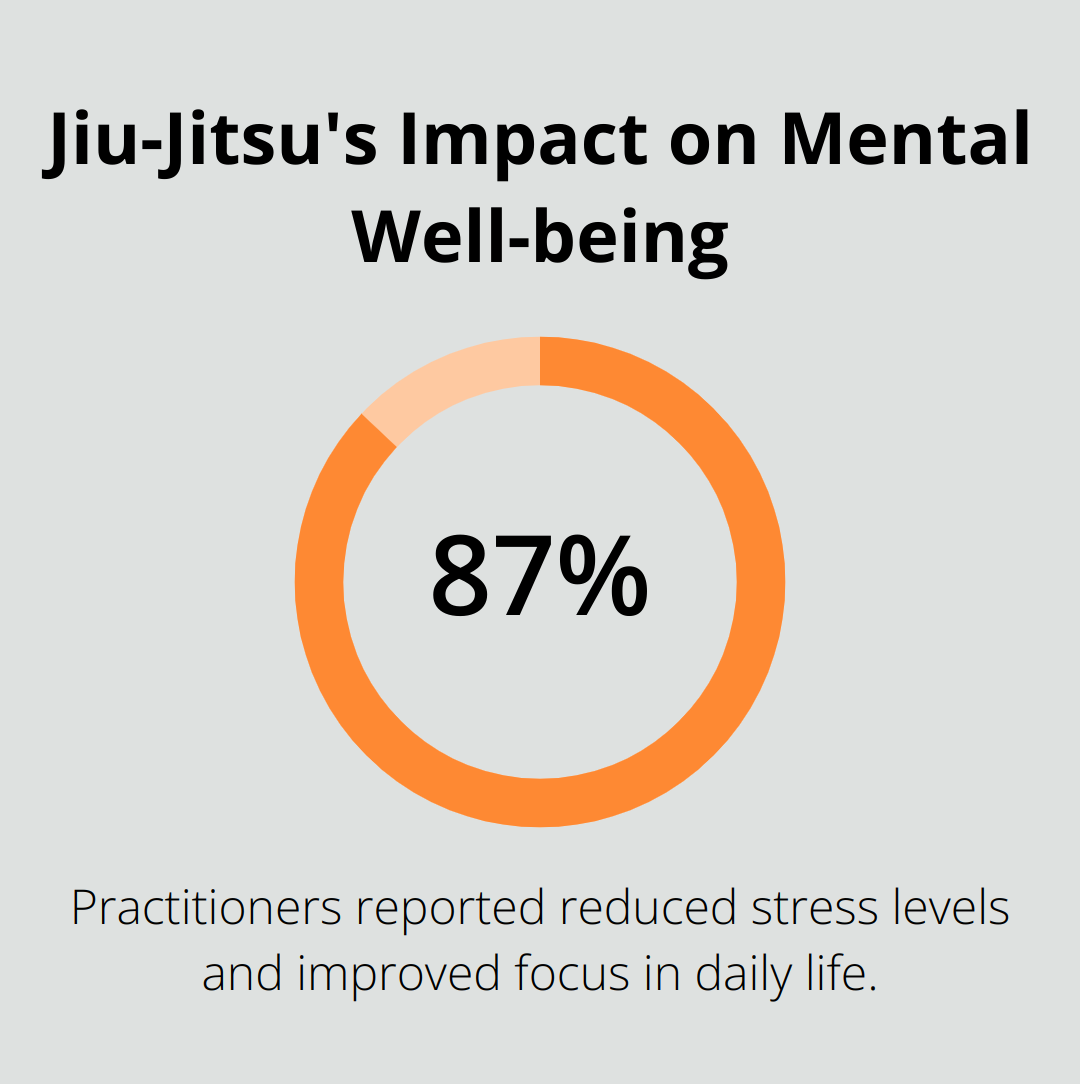
Practical Self-Defense
Unlike some martial arts that emphasize flashy techniques, jiu-jitsu focuses on practical self-defense. FBI crime statistics reveal that 70% of physical altercations end up on the ground, where jiu-jitsu excels. Students learn to neutralize threats without causing unnecessary harm, a skill invaluable in real-world situations.
Confidence Amplification
The most profound benefit lies in the boost to self-confidence. A study in the Journal of Sports Science and Medicine found that martial arts practitioners scored significantly higher on self-esteem tests compared to non-practitioners. This newfound confidence often translates into other areas of life, from career advancements to improved personal relationships.
As we explore the transformative power of jiu-jitsu, let’s now turn our attention to the fundamental techniques that form the backbone of this martial art. These essential moves will set you on the path to mastery and unlock the full potential of your jiu-jitsu journey.
Mastering Jiu-Jitsu Fundamentals
Jiu-jitsu’s complexity requires a solid foundation of basic techniques. This chapter explores key moves every beginner should focus on to build a robust skill set.
Dominating Positions
The guard, mount, and side control form the core positions in jiu-jitsu. In the guard, you lie on your back with your legs wrapped around your opponent’s waist. This position allows for both defensive and offensive moves. The mount involves sitting on your opponent’s chest, providing a dominant position for strikes or submissions. Side control puts you perpendicular to your opponent’s body, offering control and submission opportunities.
Submission Mastery
Submissions act as the checkmate of jiu-jitsu. The armbar, triangle choke, and rear naked choke are fundamental techniques that yield high success rates. The armbar hyperextends the elbow joint, while the triangle choke uses your legs to cut off blood flow to the brain. The rear naked choke, applied from behind, is one of the most effective techniques in martial arts.
Defensive Prowess
Shrimping, bridging, and framing are essential defensive moves. Shrimping involves hip escapes to create space and improve position. Bridging uses your hips to lift an opponent off you. Framing creates barriers with your arms to maintain distance and prevent your opponent from advancing.
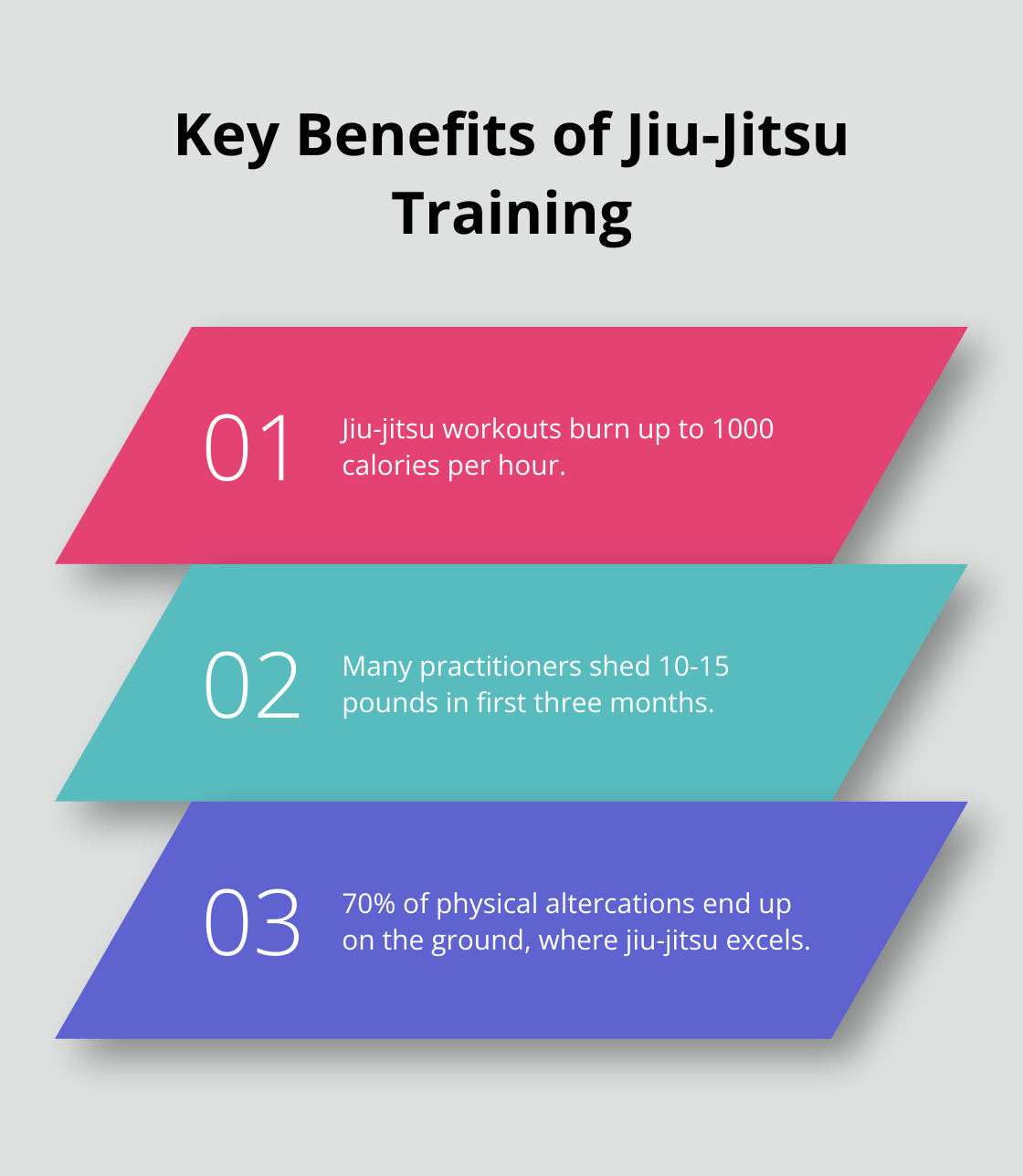
Safe Landing Techniques
Learning to fall and roll safely prevents injuries during takedowns and throws. The forward roll, backward roll, and breakfall are fundamental movements that distribute impact across your body.
Consistent practice of these foundational techniques will transform them into second nature, allowing you to focus on more advanced strategies and combinations. As you progress in your jiu-jitsu journey, you’ll need to consider where to continue your training. The next chapter will guide you through the process of selecting the right jiu-jitsu school to further your martial arts education.
Research by the International Brazilian Jiu-Jitsu Federation analyzed performance, time structure, technical actions, and perceptual responses in Brazilian jiu-jitsu.
Here’s the modified chapter with the requested changes:
Finding Your Ideal Jiu-Jitsu Dojo
The selection of the right jiu-jitsu school plays a pivotal role in your martial arts journey. This chapter will guide you through the key factors to consider when choosing a dojo that aligns with your goals and values.
Instructor Expertise and Teaching Style
The quality of instruction can significantly impact your jiu-jitsu experience. Schools with certified instructors who have competitive experience often provide high-quality training. The International Brazilian Jiu-Jitsu Federation (IBJJF) maintains a database of certified black belts, which serves as a valuable resource. During trial classes, observe the instructor’s teaching style. Effective teachers break down complex techniques, offer personalized feedback, and create a positive learning environment.
Training Environment and Culture
A clean, well-maintained facility is essential. The American College of Sports Medicine recommends that fitness facilities undergo cleaning at least three times daily to prevent the spread of skin infections (a concern in grappling sports). Beyond cleanliness, assess the gym’s culture. A supportive atmosphere can significantly enhance your progress and enjoyment. Look for a welcoming environment where advanced students help newcomers.
Curriculum and Training Methods
Different jiu-jitsu schools emphasize various aspects of the art. Some focus on self-defense, while others prioritize competition. Brazilian Jiu-Jitsu (BJJ) stands out as the most popular style, known for its ground fighting and submission techniques. Japanese Jiu-Jitsu incorporates more standing techniques and strikes. Combat Jiu-Jitsu, a newer variant, allows open-hand strikes on the ground. Determine which style aligns with your personal goals.
The IBJJF’s analysis of BJJ matches reveals that about 70% of fights end in submissions (with chokes being the most common). A good school should teach a balanced curriculum that covers both offensive and defensive techniques.
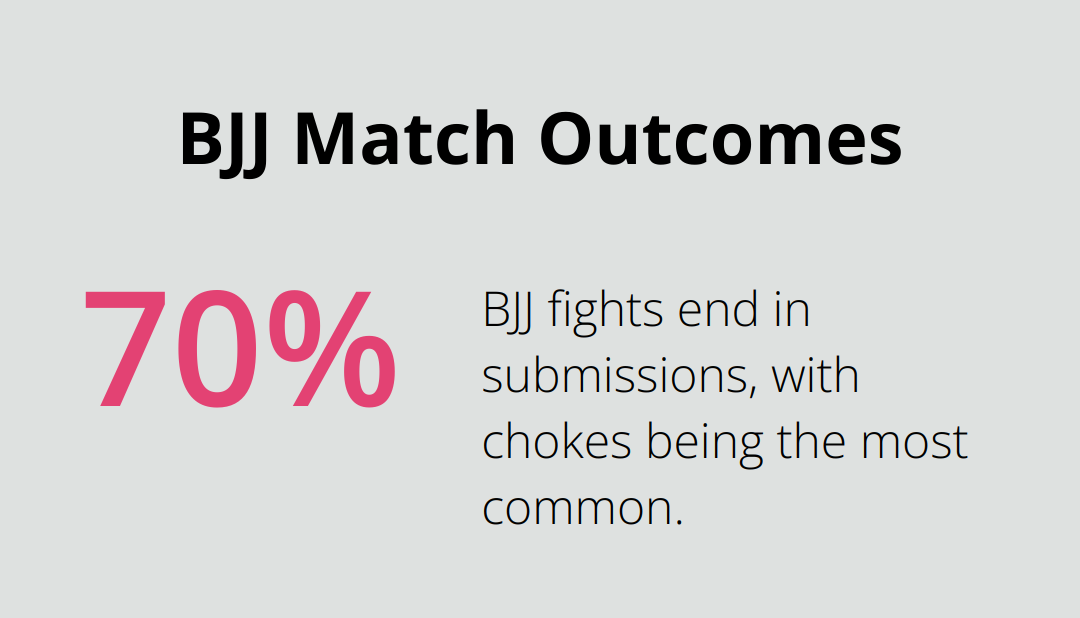
Practical Considerations
The school’s schedule and location should fit your lifestyle. A study by the International Journal of Sports Physiology and Performance highlights that consistency is key in martial arts training. Try to attend at least 2-3 sessions per week. Choose a school with class times that fit your schedule and a location that doesn’t hinder regular attendance.
Many reputable schools offer trial periods. Take advantage of these opportunities to experience classes firsthand. Observe how instructors interact with students of different levels and how students treat each other.
Understanding Belt Rankings
Knowledge of the belt ranking system is important. In BJJ, the progression typically goes from white to blue, purple, brown, and finally black belt. Each promotion should reflect skill demonstration, not just time spent training. Ask about the school’s promotion criteria to ensure they align with recognized standards.
When visiting potential schools, ask questions about instructor credentials, class sizes, and safety protocols. A transparent and welcoming school will address your concerns readily.
Final Thoughts
Jiu-jitsu transforms lives through physical and mental benefits. It improves fitness, self-defense skills, focus, and confidence, positively impacting every aspect of life. The Jiu Jitsu World League showcases the growing popularity and competitiveness of this martial art on a global scale.
Mastering fundamental techniques builds a solid foundation for jiu-jitsu practice. Regular training of basic positions, submissions, and defensive moves enhances skills on the mat and boosts self-assurance in daily life. Selecting the right jiu-jitsu school (considering factors such as instructor credentials and curriculum) shapes your martial arts experience and progress.
Souza Grappling Co. offers a supportive environment for jiu-jitsu enthusiasts of all levels. Our facility provides classes in Jiu-Jitsu, Muay Thai, Yoga, and Self-Defense, led by expert trainers. We invite you to join us and discover the life-changing benefits of jiu-jitsu for yourself.

